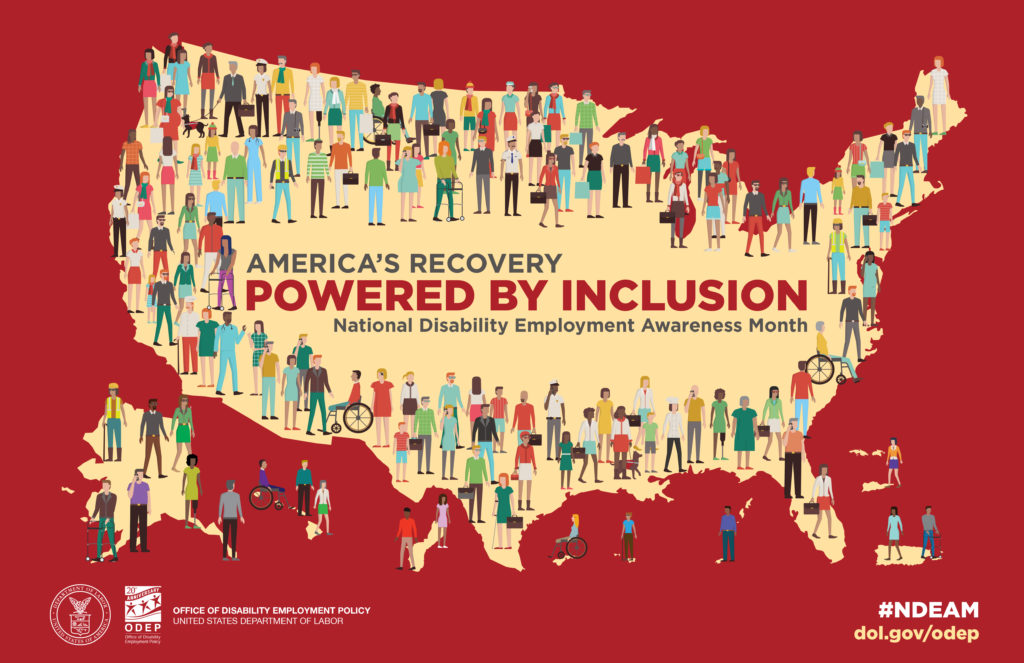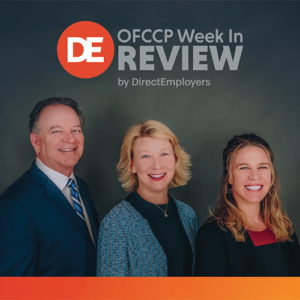
- Real-Time Labor Market Information Available Through National Labor Exchange (NLx)
- Navigating COVID-19 Vaccine Mandate: Employer vs. Employee Rights
- Open Virtual Meeting on Veteran Employment & Employer Outreach
- NLRB Counsel Continues to Trailblaze – This Time for Student-Athletes
- Another $68 Million Awarded for Job Seeker Assistance
- NASWA Announced Its 2021-2022 Board of Directors
- FAR Council Required Two Clauses to Be Embedded in Federal Contracts Seeking to “Require” Compliance with Any and All Task Force “Guidances” Re COVID-19 Vaccinations or Testing
- Government Fiscal Year Kicks Off In Status Quo
- It’s National Disability Employment Awareness Month!
Tuesday, September 28, 2021: Real-Time Labor Market Information Available Through National Labor Exchange (NLx)
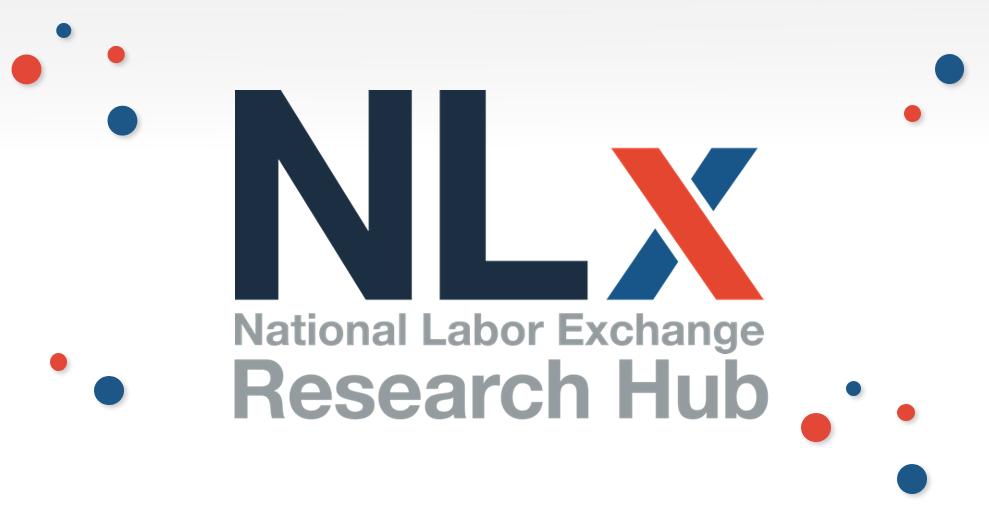
The Research Hub is the result of an earlier Data Trust Agreement between NASWA and DirectEmployers Association to share labor market data with state workforce agencies, researchers, policymakers, job seekers, and employers. Approved data users can now access the millions of real-time and historical job postings collected through the National Labor Exchange (NLx), using new data access points and technical background documents.
The NLx Research Hub intends to make real-time job vacancy information a public utility for the first time, broadening opportunities for research, analytics and product development. Several state workforce agencies will pilot integrations between the NLx job posting data and traditional labor market information sources. All NASWA member state workforce agencies will each receive one no-cost data access credential.
The development of the NLx Research Hub was made possible through the National Science Foundation’s Convergence Accelerator program.
For more information on the NLx Research Hub, visit nlxresearchhub.org.
Tuesday, September 28, 2021: Navigating COVID-19 Vaccine Mandate: Employer vs. Employee Rights
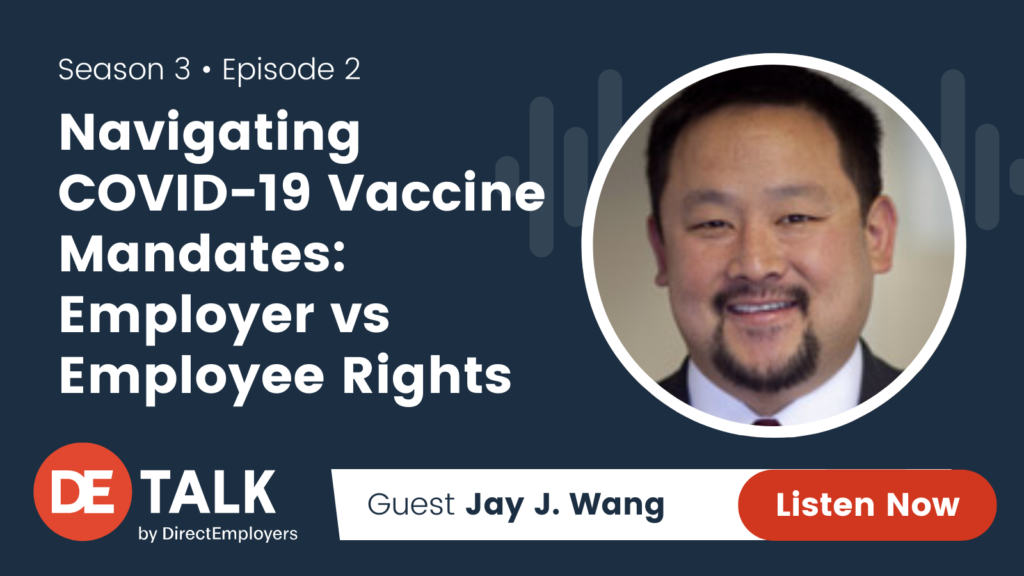
Listen to the latest DE Talk Podcast featuring employment lawyer Jay Wang of Fox, Wang, & Morgan. Jay provides guidance on vaccine mandates, the recent FDA approval, and what this means for employers and employees around the nation.
Tuesday, September 28, 2021: Open Virtual Meeting on Veteran Employment & Employer Outreach

Meeting Topic
The Committee will discuss the U.S. Department of Labor’s core veteran employment programs and services. As always, the goal is to raise employer awareness of the advantages of hiring veterans.
Meeting Details
Date: Thursday, October 14, 2021
Time: 9:00 AM – 12:00 PM (EST)
There will be an opportunity for individuals or organizations to address the Committee. Any individual or organization that wishes to do so should contact Mr. Gregory Green at ACVETEO@dol.gov.
The meeting will be held via TEAMS and teleconference. Meeting information will be posted under the Meeting Updates tab.
See the announcement for a detailed agenda.
Wednesday, September 29, 2021: NLRB Counsel Continues to Trailblaze – This Time for Student-Athletes
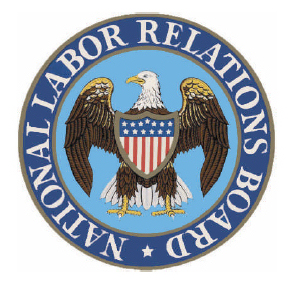
The memo went to all Field offices and provided Abruzzo’s updated guidance on her position about student-athletes. Where appropriate, she will allege that misclassifying such employees as mere “student-athletes” and leading them to believe that they are not entitled to the Act’s protection has a chilling effect on Section 7 activity and is an independent violation of Section 8(a)(1) of the Act.
The memo also reinstates a related one, GC 17-01, “General Counsel’s Report on the Statutory Rights of University Faculty and Students in the Unfair Labor Practice Context.” This memo had been rescinded on 12/1/17. Flip-Flop.
Wednesday, September 29, 2021: Another $68 Million Awarded for Job Seeker Assistance
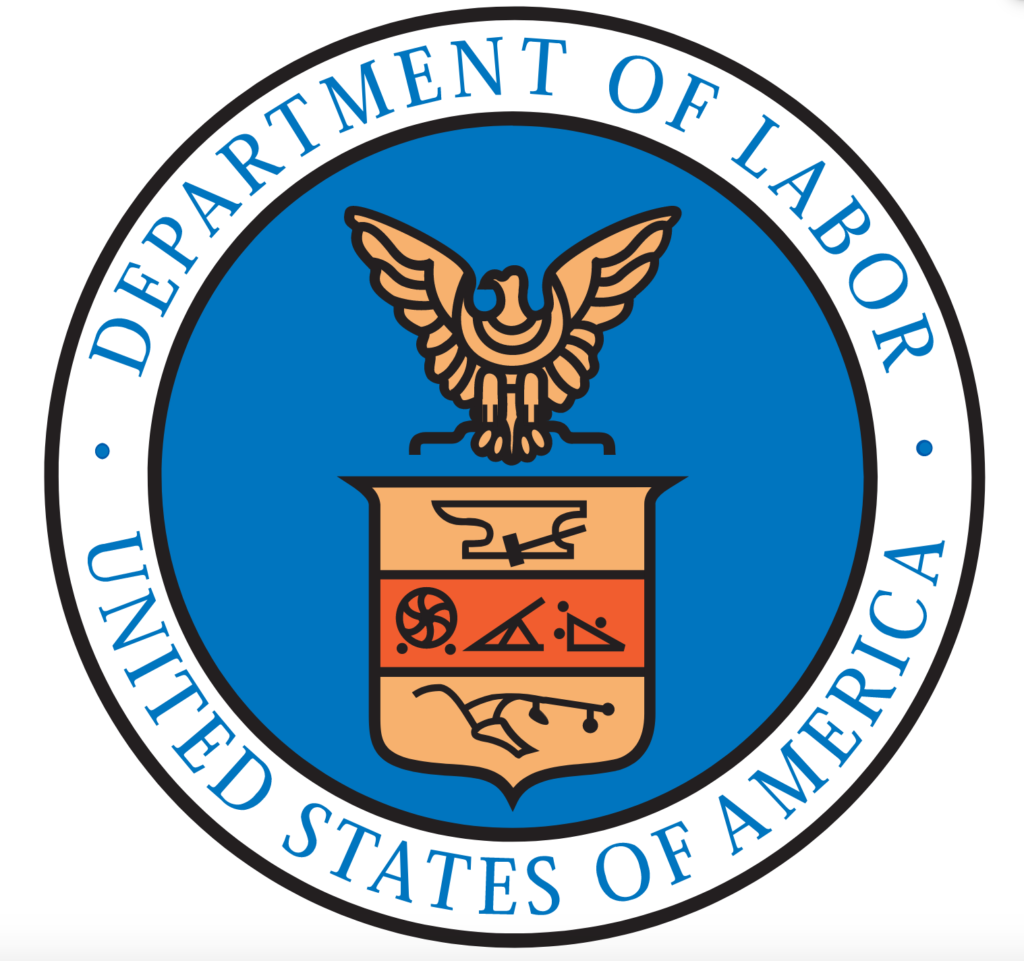
We reported in August that the “USDOL Announced $90M In Grants To Support Reemployment Services For Workers Displaced By The Pandemic.” The USDOL announced the first nine organizations to receive grants later in August.
See the complete list of the new recipients in the latest news release.
Wednesday, September 29, 2021: NASWA Announced Its 2021-2022 Board of Directors

Executive Committee Members of the Board:
- Chair – Robert Asaro-Angelo, Commissioner, New Jersey Department of Labor and Workforce Development
- Chair-Elect – Dr. Tamika Ledbetter, Commissioner, Alaska Department of Labor and Workforce Development
- Past Chair – Fitzgerald Washington, Secretary, Alabama Department of Labor
- Secretary – Michael Harrington, Commissioner, Vermont Department of Labor
- Treasurer – John Albin, Commissioner, Nebraska Department of Labor
Board of Directors, listed by NASWA region:
- Region 1: Director – Jennifer James-Price, Undersecretary for Workforce Development, Massachusetts Executive Office of Labor and Workforce Development
- Region 2: Director – Nesha Christian-Hendrickson, Assistant Commissioner/Legal Counsel, U.S. Virgin Islands Department of Labor
- Region 3: Director – Dr. Unique Morris-Hughes, Director, Washington D.C. Department of Employment Services
- Region 4: Director – Jamie Suber, Chief of Staff, South Carolina Department of Employment and Workforce
- Region 5: Director – Josh Richardson, Chief of Staff, Indiana Department of Workforce Development
- Region 6: Director – Ava Cates, Secretary, Louisiana Workforce Commission
- Region 7: Director – Dr. Mardy Leathers, Director, Missouri Department of Higher Education & Workforce Development
- Region 8: Director – Joe Barela, Executive Director, Colorado Department of Labor & Employment
- Region 9: Director – Lynda Parven, Administrator, Employment Security Division, Nevada Department of Employment, Training & Rehabilitation
- Region 10: Director – David Gerstenfeld, Acting Executive Director, Oregon Employment Department
The incoming Executive Committee and Board Members assumed their respective posts upon election at the NASWA Annual Membership Meeting on September 22, 2021. All positions serve a one-year term, except the treasurer, who serves for two years.
Thursday, September 30, 2021: FAR Council Required Two Clauses to Be Embedded in Federal Contracts Seeking to “Require” Compliance with Any and All Task Force “Guidances” Re COVID-19 Vaccinations or Testing
The new contract language also purports to require federal Government Contractor compliance with even Task Force FAQs…Really
A new era of Executive Fiat dawns in Washington, D.C.
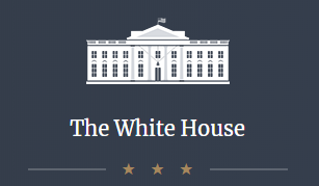
“(c) Compliance. The Contractor shall comply with all guidance, including guidance conveyed through Frequently Asked Questions, as amended during the performance of this contract, for contractor or subcontractor workplace locations published by the Safer Federal Workforce Task Force…”
“(d) Subcontracts. The Contractor shall include the substance of this clause, including this paragraph (d), in subcontracts at any tier that exceed the simplified acquisition threshold, as defined in Federal Acquisition Regulation 2.101 on the date of subcontract award, and are for services, including construction, performed in whole or in part within the United States or its outlying areas.”
- The Task Force’s new September 30, 2021 Guidance follows President Biden’s September 9, 2021 Executive Order 14042 (Executive Order on Ensuring Adequate COVID Safety Protocols for Federal Contractors) and the Task Force’s September 24, 2021 “Guidance.” That “Guidance” purported to require federal contractors and subcontractors to cause their employees to be vaccinated against COVID-19 or to test them weekly. We twice discussed this controversial Executive Order in our September 13, 2021 WIR (President Biden Mandates COVID-19 Vaccine for Certain Federal Contractors: Exceptions As Interesting As Who is Covered, and Two of President Biden’s Four Vaccine Mandates are Likely Unlawful, Without Implementing Rules, While the Other Two are Likely Lawful). We discussed the Task Force’s September 24 Guidance in our September 27, 2021 WIR in this story: “By Executive Fiat, White House Task Force Suddenly Extended a COVID-19 Vaccine Mandate to Include ALL Employees of Federal Contractors and Subcontractors.”
As a further surprise, the Task Force neither issued any proposed or Final Rules regarding its contract requirements nor coordinated its purported vaccine and testing “requirements” with the still unpublished “Emergency Temporary Standard on COVID-19” the President also directed (via EO 14042) USDOL’s Occupational Safety and Health Administration (OSHA) to publish on a priority basis. Rather, the Task Force is relying simply on the power of executive fiat, the hope that its vaccine and testing requirements will somehow mirror those of OSHA and the further hope that embedding the Task Force’s requirements in federal contracts will pressure federal contractors to accept the result fait accompli.
The Task Force’s published “Guidance” applies to Executive Branch agencies that award contracts under the Federal Acquisition Regulation (FAR). The FAR Council issued the 5-page memo to Chief Acquisition Officers, Senior Procurement Executives, the Defense Acquisition Regulations Council, and the Civilian Agency Acquisition Council.
The Looming Timeline to Install the New Clauses
“1. Applicability and effective dates. In accordance with section 5 of the order, agencies are required to include an implementing clause in solicitations and contracts for services, including construction, in accordance with the following dates specified in section 6 of the order:
- new contracts awarded on or after November 14 from solicitations issued before October 15 (this includes new orders awarded on or after November 14 from solicitations issued before October 15 under existing indefinite-delivery contracts);
- new solicitations issued on or after October 15 and contracts awarded pursuant to those solicitations (this includes new solicitations issued on or after October 15 for orders awarded pursuant to those solicitations under existing indefinite-delivery contracts);
- extensions or renewals of existing contracts and orders awarded on or after October 15, 2021; and
- options on existing contracts and orders exercised on or after October 15, 2021.”
What Happens If a Contractor Signs a Federal Contract with the New Clauses and Then Disobeys the Task Force Guidances?
If federal contractor groups, or a federal contractor, do not sue and obtain an injunction against the Task Force “Guidances,” and if your company does not wish to comply with one or more of the Task Force’s “Guidances,” you will need to consult an employment lawyer or a government contracts lawyer to determine “next steps.”
By the way, one of the issues employers are just now starting to think through is the cost of the alternative to vaccinations: weekly or twice a week COVID-19 tests. Insurance based costs are reportedly averaging between $50 to $200 per test. Several studies report an average of about $150 per test. Assuming four tests per month (one-a-week), an employee testing regimen could then cost approximately $600 per month per employee to be tested, or about $7,200 per year for each employee to be tested.
There are also wage-hour issues lurking as employees are already demanding pay while waiting to be tested, while being tested and if they are asked to wait for results on some of the quick tests (12-minute results, or so).
In The Know
The Federal Acquisition Regulation (FAR) is the principal set of rules regarding federal government procurement in the United States. It is codified at Chapter 1 of Title 48 of the Code of Federal Regulations.
The largest single part of the FAR is Part 52, which contains standard solicitation provisions and contract clauses. Solicitation provisions are certification requirements, notices, and instructions directed at companies interested to compete for a federal contract. The new clauses we report today, for example, will eventually appear in Part 52 of the FAR.
Thursday, September 30, 2021: Government Fiscal Year Kicks Off In Status Quo

By the way, kudos to Tony Kaylin, Vice President of the American Society of Employers in Detroit and this year’s Chair of the National Industry Liaison Group, for having predicted, with confidence, IN JANUARY 2021—10 months ago—that Democrats and Republicans would lock up on the budget and that the White House would have to settle for a Continuing Resolution, and not a full year’s budget.
No additional funding means no additional headcount authorization for any federal agency subject to the CR. For example, in our blog on June 1, 2021: OFCCP Seeks Unprecedented 33% Budget Increase: Focus is on Rebuilding OFCCP; Not Audit Enforcement, we wrote about OFCCP’s hope to obtain additional budget in Fiscal Year 2022 (which just began on Friday October 1, 2021) sufficient to hire 188 additional employees. If that budget proposal is successful, it would increase OFCCP’s on-roll headcount authorization from its current (FY 2021 and now FY 2022-through Dec 3, 2021) 451 employee authorization to an authorization to hire up to 639 employees (451+188).
The CR does not mean that the federal agencies cannot hire, it just means that their budgets will remain even with their last year’s budgets which could afford, in the case of OFCCP, 451 employees. In fact, most federal agencies will be hiring though the Fall because they are short-staffed and their on-roll headcount does not equal or exceed the agency’s authorized headcount. OFCCP, for example, is currently down in headcount over 50 employees (with a current headcount figure of slightly below 400 employees nationwide recently whispered to us). So, OFCCP has budget to hire another 50+ employees immediately, if the agency could only find that many qualified applicants willing to go to work for it.
If, if, if the temporary stop gap measure the President signed Thursday night through December 3 were to continue through the entire Fiscal Year 2022 (as has happened several times in recent years), however, that would spell a further shrinkage in the headcounts of the federal agencies. In the case of OFCCP, for example, its costs to do business typically increase about 2% per year (to fund larger and more numerous pensions, increased salary costs, and higher costs of goods and services the agency needs to operate). Two percent on OFCCP’s current $106M budget is a little over $2M in added costs to operate during FY 2022. Two Million dollars is about the cost needed to keep 20 OFCCP employees on-roll. So, if OFCCP’s FY 2022 budget for the entire Fiscal Year stayed the same as last year (FY 2021) and OFCCP’s expenses rose about $2M, OFCCP would likely compensate by simply dropping its headcount authorization from its current 451 to about 430.
The current two-month CR also probably adversely impacts the timing of the roll-out of OFCCP’s AAP-Verification Initiative. Funds necessary for new OFCCP employees to manage that new project and to buy and service the needed computer servers and software necessary to manage that initiative may be needed before launch.
Federal contractors and OFCCP Director Jenny Yang will watch the continuing discussions in the Nation’s Capital with interest as the parties next prepare to position themselves for the “federal budget ceiling” increase fight to be resolved one way or the other by October 18, 2021 (i.e., the date U.S. Treasury Secretary Janet Yellen has calculated the federal government will literally run out of money and will start defaulting on its debt payments).
Resolution of that large financial issue, will then pave the way for the Congress to again lock horns on the Budget Bill in an attempt to resolve it on or before December 3, 2021 when the current CR will expire. On Friday, President Biden threw a concession to moderates in the Democratic Party objecting to the size of the Budget Bill by telling them that he was lowering the Budget Bill proposal (recently renamed the Human Infrastructure Bill to make it sound more saleable) from a hoped-for $3.5 Trillion to about $2 Trillion. He then threw left-wing Democrats (recently renamed “Progressives”) a concession by deciding to move forward first on the Human Infrastructure Bill (packed with Biden’s social spending proposals) while holding back for later debate and passage of the “Infrastructure Bill” to rebuild our roads, bridges and broadband internet systems (now renamed the “Bipartisan Infrastructure Framework”) and now repriced (as of July 28, 2021) from $1.5 Trillion to $550 Billion in a bi-partisan deal in the U.S. Senate.
So, after the Budget Ceiling fight and before December 3 (when the CR times out), Democrats are poised to resume the debate about the size of discretionary spending on the federal government budget (last year FY 2021=$1.298 Trillion), and will bundle it with the Biden social spending hopes, now trimmed to at least (only) about $2 Trillion (leaving about $700 Billion for Democrats and Republicans to arm wrestle between October 18, 2021 and December 3, 2021. The action there is not just as to the number ($1.3ish Trillion verses $2ish Trillion, or something in between), but also as to what social programs and federal agency budgets will shrink from the President’s original $3.5 Trillion budget proposal.
You saw Democrats fighting on Thursday and Friday among themselves as to what to cut out of the $3.5 Trillion original Biden proposal to now fit within a $1.5 Trillion to $2 Trillion budget. That turned ugly, with polite reporters suggesting only that “trust” between Democrat Members of Congress became challenged as one after another pet project social program went on the chopping block. And then when the Democrats quit squabbling among themselves about what’s “in” and what’s “out” of the budget to eventually be newly proposed, the Republicans may want to have a say in some of that spending, too. So, there is a tough road-to-hoe ahead.
And, remember, these discussions could easily deadlock again and force another Continuing Resolution (which, by the way, are terribly disruptive to federal agency managers trying to run the agency and lay down plans in what feels to them like warm wiggly jello).
NOTE: Senator Joe Manchin (D-WV) has repeatedly and firmly said he will not vote for any Budget Bill or Human Infrastructure Bill, by whatever name, for more than $1.5 Trillion. And Senator Krysten Sinema (D-AZ) (who is a “tough cookie” by all accounts) has said she would not vote for any bill if the Bipartisan Infrastructure Bill (she and Senator Manchin helped sponsor and move through the Senate) did not first pass the Congress before the Budget Bill. In fact, Senator Sinema left town last week and headed home to Arizona (took her ball and went home) to register her disgust with discussions which led Speaker of the House Nancy Pelosi (D-CA) to twice delay the vote in the House this past week (and then indefinitely) while backtracking on her earlier promise to moderate Democrats to call for a House vote in September on the heels of the Senate’s July 28, 2021 bi-partisan vote in favor of the Bill. (NOTE: U.S. Senators must be on the Senate Floor to cast their vote for or against a Bill. Senator Sinema’s absence from Washington D.C. would cost Senate Majority Leader Chuck Schumer a “Yes” vote necessary to pass any Senate Bill lacking bi-partisan support).
So, I guess we better ask Tony Kaylin what his crystal ball says about a further CR on December 3. Tony, what are you thinking?
Friday, October 1, 2021: It’s National Disability Employment Awareness Month!
Held each October, National Disability Employment Awareness Month (NDEAM) commemorates the contributions of individuals with disabilities to the workforce and our economy at large. This year’s theme, America’s Recovery: Powered by Inclusion, aims to shed light on the importance of individuals with disabilities in the recovery of our nation during the COVID-19 pandemic and the importance of ensuring they have full access to employment during these difficult times.
DirectEmployers Association has many disability and inclusion resources to share!
Are Your Recruiters Disability Certified? Check out the DE Academy for this and several other disability inclusion courses for your entire organization.
What’s Happening This Month
The Office of Disability Employment Policy has ideas for “31 Days of NDEAM,” which provides a task or event to make every day count!
RespectAbility will host a month-long celebration, “NDEAM Entertainment Media Summit: A Focus on the Future,” consisting of a series of virtual celebrations, panel conversations, and networking opportunities. Through a combination of forward-facing panels and breakout networking rooms, participants will learn about writing, directing, producing, self-advocacy, and more.
Read President Biden’s Proclamation on National Disability Employment Awareness Month.
NDEAM Dedicated Websites
- Library of Congress, National Disability Employment Awareness Month
- The U.S. Census Bureau will not release its standard 2020 ACS 1-year estimates because of the impacts of the COVID-19 pandemic on data collection. Experimental estimates, developed from 2020 ACS 1-year data, will be available by November 30th. However, the 2019 American Community Survey (ACS), 1-Year Estimate includes the following tables related to various disabilities:
- Sex by Age by Disability Status
- Sex by Age by Hearing Difficulty
- Sex by Age by Vision Difficulty
- Sex by Age by Cognitive Difficulty
- Sex by Age by Ambulatory Difficulty
- Sex by Age by Self-Care Difficulty
- Sex by Age by Independent Living Difficulty
THIS COLUMN IS MEANT TO ASSIST IN A GENERAL UNDERSTANDING OF THE CURRENT LAW AND PRACTICE RELATING TO OFCCP. IT IS NOT TO BE REGARDED AS LEGAL ADVICE. COMPANIES OR INDIVIDUALS WITH PARTICULAR QUESTIONS SHOULD SEEK ADVICE OF COUNSEL.
SUBSCRIBE.
Compliance Alerts
Compliance Tips
Week In Review (WIR)
Subscribe to receive alerts, news and updates on all things related to OFCCP compliance as it applies to federal contractors.
OFCCP Compliance Text Alerts
Get OFCCP compliance alerts on your cell phone. Text the word compliance to 55678 and confirm your subscription. Provider message and data rates may apply.

